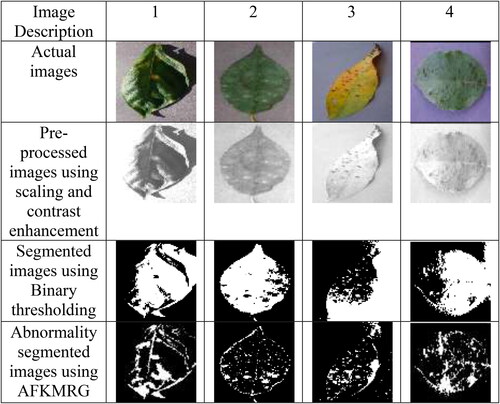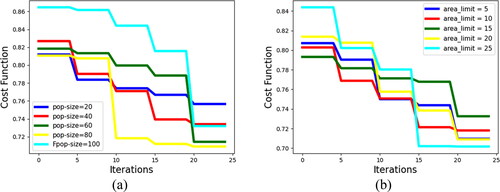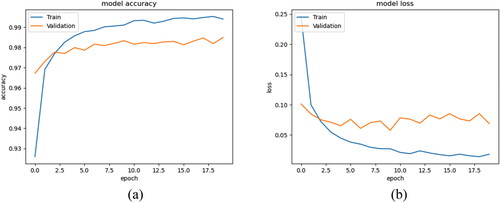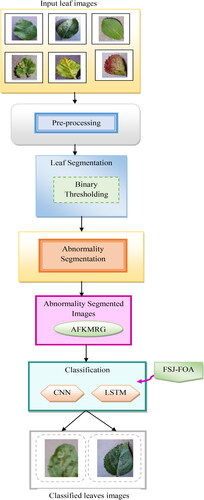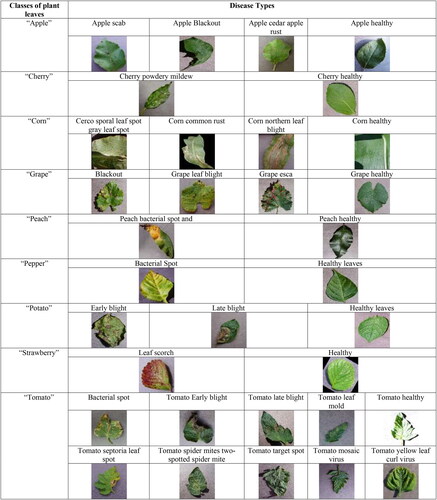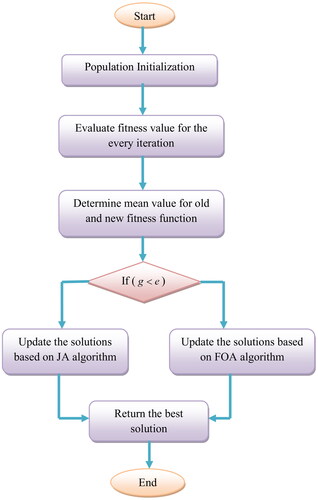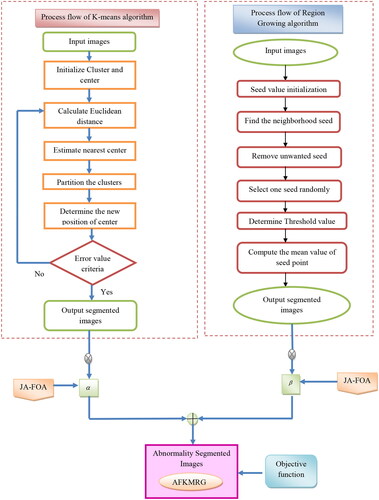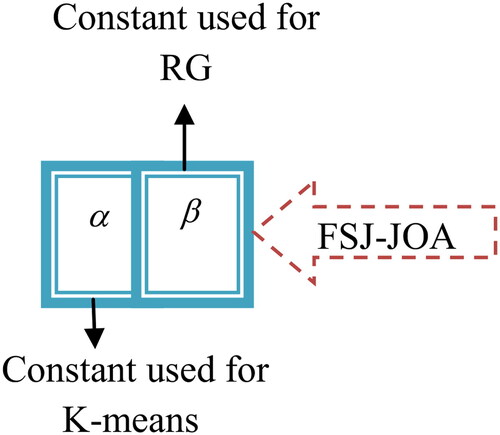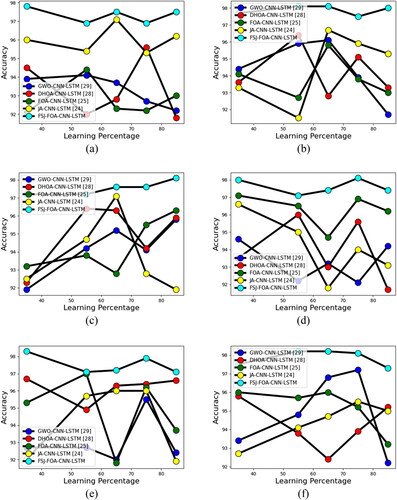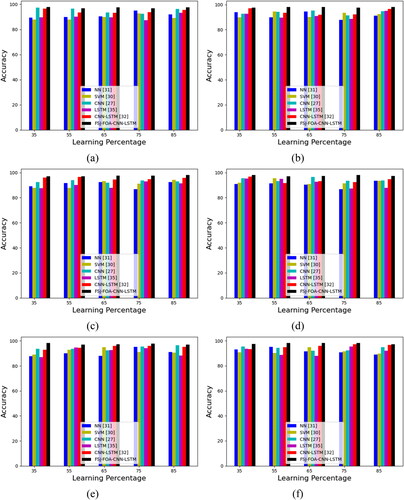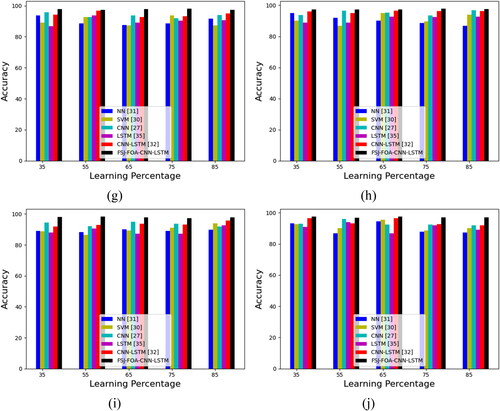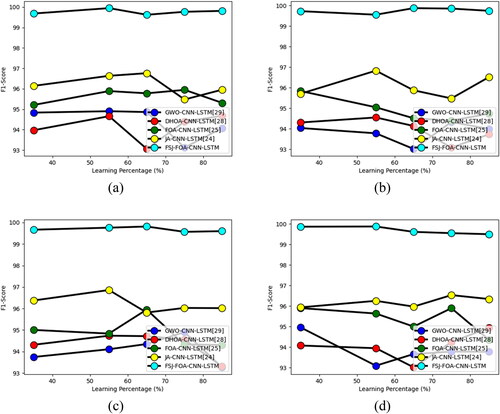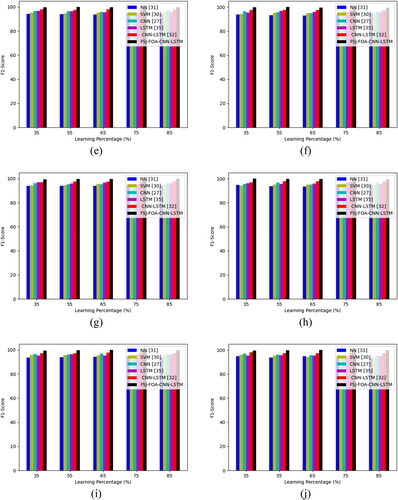Figures & data
Table 1. Features and challenges of multi-disease classification of plant leaves.
Table 2. The statistics of the whole dataset for the suggested method.
Table 3. Calculation of the offered scheme on optimization algorithms for different types of plant leaves.
Table 4. Examination of the proposed multi-disease classification of plant leaves model on classifiers for different types of plant leaves.
Table 5. Calculation of running time for the offered scheme for different types of plant leaves.
Table 6. Total image images of both datasets for the designed model.
Table 7. Evaluation of confusion matrix with conventional optimization algorithms for the offered method.
Table 8. Estimation of confusion matrix with conventional classifiers for the designed method.
Table 9. Examination of the offered FSJ-FOA-CNN-LSTM-based multi-disease classification method of plant leaves model.
Table 10. Validation of the offered FSJ-FOA-CNN-LSTM-based multi-disease classification method of plant leaves model with classifiers.
Data availability statement
The analysis of multi-disease detection of plant leaves is performed by using different leaf images gathered from two diverse datasets such as Kaggle and Mendeley.
